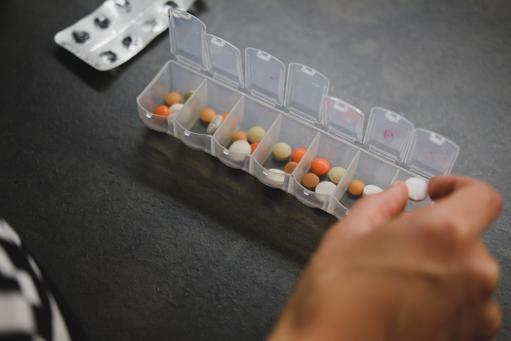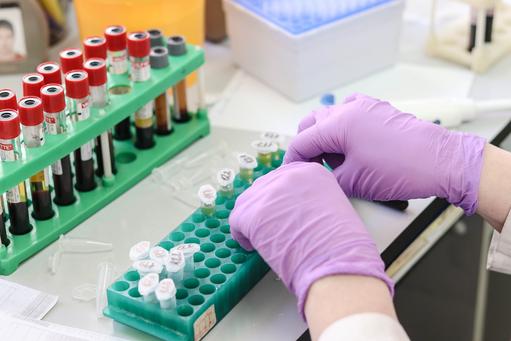Publications
- All
-
Following
You must log in
before getting
tailored content. -
Interests
You must log in
before getting
tailored content. - Most liked
- Most viewed

|
|
|
|
|

- The CoVID-19 pandemic created an unprecedented global shock and killed hundreds of thousands
- Nations responded by closing their borders, implementing stringent lockdowns and saying the world is at war with a common invisible adversary
- Responses to the outbreak diverged in the different regions of the world
- Asian countries responded rapidly and effectively
- The US and UK responded slowly and ineffectively
- Observers suggested that the divergent responses to CoVID-19 signal a shift in power and influence from West to East
- National responses alone are insufficient to effectively deal with the coronavirus
- Only by embracing effective international cooperation will governments protect their citizens and safely exit the CoVID-19 crisis
National leaders have described the coronavirus CoVID-19 pandemic as “the enemy”. In attempts to protect their citizens, nations turned inwards and closed their borders, implemented stringent lockdown restrictions and suggested that the world is at war with a common adversary it cannot see. The speed and effectiveness of national responses to the new coronavirus crisis differed, but not even the wealthiest, most advanced nations were able to protect their citizens. The global coronavirus crisis made millions seriously ill, killed hundreds of thousands, destroyed industries, bankrupted thousands of companies, caused economies to nose-dive and threw societies into turmoil. Only by avoiding nationalist policies and embracing effective international cooperation will governments protect their citizens and safely exit the CoVID-19 crisis.
CoVID-19 has rapidly spread throughout the world with a scale and a severity not witnessed since the devastating Spanish Flu in 1918. So-called because Spain was neutral during WW1 and was one of the few countries where journalists were free to report on the outbreak. In an era before antibiotics and vaccines, the Spanish Flu claimed the lives of nearly 0.68m Americans, 0.25m Britons and between 50 to 100m people worldwide. Adjusting for population growth, that is equivalent to between 200 and 425m today.
At the time of writing - June 2020 - neither an adequate therapy nor a vaccine has been developed and CoVID-19 remains prevalent in populations throughout the world. Even with today’s scientific advances, infectious diseases are notoriously challenging to either treat or cure: an Ebola vaccine was more than two decades in the making; despite the first cases of the human immunodeficiency virus (HIV) presenting in 1983, we still do not have a therapeutic preventative vaccine for the disease; nor do we have a vaccine for severe acute respiratory syndrome (SARS), a killer coronavirus, which also originated in China and was unknown before its outbreak in 2002.
Notwithstanding, governments have lifted lockdown restrictions in order to get their economies working again. V, U, W and L are letters of the alphabet used to describe the shape of a recovery following the economic crisis caused by CoVID-19. Stringent lockdowns forced economies into unprecedented cold storage, and no one knows what shape a recovery will take since professional forecasters have never encountered anything like the sheer magnitude of the current economic crisis.
The Bank of England’s Monetary Policy Report published in May 2020, warned that the coronavirus has caused the worst economic crisis in 300 years. So, emerging from this is unlikely to be either straightforward or quick. National responses to the coronavirus outbreak were mixed. Although it is too soon to know the longer-term effects of the virus, China, Singapore and South Korea are among the countries that responded early and effectively, while the US and UK, together with other Western European countries, responded late and less effectively. As of June 1, China, with a population of 1.4bn, had 83,017 confirmed cases and 4,634 deaths; South Korea with a population of 52m, had 11,537 cases and 270 deaths, and Singapore with a population of 5.7m, had 34,884 confirmed cases and 23 deaths.
This Commentary describes the divergent national responses to the CoVID-19 pandemic; in particular that of China, Singapore, South Korea, the US and UK. China’s more effective response might have been because Beijing benefitted from the lessons it learned after the SARS epidemic in 2002. Governments also differed in their approaches to lifting restrictions. China’s approach was slower than that of the US and more determined to make some of the unexpected benefits thrown up by the crisis permanent. Some observers perceive such variances as a difference between liberal and illiberal nations. Others view the divergences as a shift in power and influence from West to East. We suggest that the divergent responses and outcomes are a product of the capacity and legal authority of different states and reveal different mindsets and competing views about solutions. We also contend that the devastation created by the pandemic will only be resolved with effective international cooperation. However, it is difficult to see this happening in the near term as the pandemic has become a theatre for a wider political disagreement between the US and China, in which other nation states are being forced to take sides.
China, Singapore and South Korea leveraged the collectivists mindset of their citizens, their centralised authority and digital infrastructures to quickly implement the gold standard “test-trace-and-isolate” strategy to reduce and control the virus. The reason for such prompt actions and the subsequent relatively low number of cases and deaths in these Asian countries is described by Byung-Chul Han, a South Korean-born German Professor of Philosophy at the Universität der Künste in Berlin. In an article published on May 22, in the Spanish newspaper El Pais, Han suggests that Asian nations won the battle against the CoVID-19 outbreak because their citizens, “have a collectivists mindset, which comes from their cultural tradition of Confucianism. Asians are less rebellious and more obedient than people in the West. They trust the state more. Daily life is much more organised, and Asians are strongly committed to digital surveillance. The epidemics in Asia are fought not only by virologists and epidemiologists but also by computer scientists and big data specialists”.
Given Iran’s response to CoVID-19 has been less effective, it seems reasonable to suggest that the Confucian mindset, rather than authoritarianism, appears to provide at least a short-term advantage. In early March, at the Shia Muslim Masumeh shrine in the holy city of Qom, pilgrims licked and kissed its gates. Qom experienced Iran’s first outbreak of the coronavirus and became the country's worst-hit city. Shortly afterwards the government closed all major Shia shrines across the Islamic republic and reopened them again in late May. As of June 1, Iran with a population of 81m, had confirmed 154,000 cases of CoVID-19 and 7,878 deaths.
|
|
|
|

During these unprecedented challenging times caused by the coronavirus CoVID-19 pandemic, we trust that you all stay safe and well and let the spirit of Ramadan remain in your hearts and light up your souls from within.


To everyone working long and stressful hours on the frontline of healthcare; thank you for the sacrifices you’re making every day to help others in their moments of need. Your dedication, commitment and courage have our deepest gratitude and admiration.
Also, our heartfelt thanks go to all key workers who are unselfishly providing essential services, which are helping all of us through this coronavirus outbreak. Your resolution and mettle make a huge difference to our daily lives and we hold you in the highest esteem.
#coronavirus #CoVID-19 #frontlinehealthcareworkers #keyworkers #healthcare
Directory:
Tags:

- The coronavirus CoVID-19 has created the greatest health-cum-economic-cum-societal crisis in history and put unprecedented pressure on overstretched and unprepared healthcare systems
- Before the coronavirus outbreak, primary care in England already was in crisis, fuelled by an aging population, a large and increasing demand for its services and a shrinking supply of health professionals
- In 2019, before the outbreak, 75% of primary care doctors (GPs) across 540 clinics in England were over the age of 55 and nearing retirement and a large percentage of newly trained GPs were seeking employment abroad
- Patients who could not get GP appointments used A&E departments as convenient drop-in clinics for minor ailments, which significantly increased healthcare costs and burden
- For decades successive UK governments have tried in vain to transform the nation’s primary care services predicated upon face-to-face patient-doctor consultations
- Several well-funded long-term national plans advocated increased digitization of some routine primary care services
- But before the coronavirus outbreak only 1% of all primary care consultations were online
- What these national plans could not achieve in decades appears to have been achieved in days by the UK’s NHS’s response to the coronavirus outbreak
- Today, millions of patients in England are having face-to-face appointments with their GPs replaced by telephone or video consultations
- Could CoVID-19 transform the UK’s traditional primary care model?
The coronavirus CoVID-19
The 1918 Spanish Influenza remains the most devastating virus in modern history. The disease swept around the globe and is estimated to have caused between 50m and 100m deaths. A cousin of the same virus was also behind the 2009 swine flu outbreak, thought to have killed as many as 0.58m. Other major viral outbreaks include the Asian flu in 1957, which led to roughly 2m deaths and the Hong Kong flu, which killed 1m people 11 years later.
In this Commentary
UK’s primary care crisis
Changing and aging population
Shrinking supply of GPs
Failing national initiatives to improve primary care
The UK’s NHS
National plans to improve the NHS
NHS long term plans and private online healthcare solution companies have delivered little change
The plan emphasises the importance of developing digital services, and recommends that within five years, all patients should be able to access GP consultations via a telephone or online. This goal is supported by NHS Digital, which is the national information and technology partner to the UK’s health and social care system. Its mission is to harness the power of information and technology to improve healthcare. Over the past decade there has been an increasing number of innovative online private healthcare solutions companies entering the market. (see below). Notwithstanding, these and the NHS’s well-funded national plans, have failed to dent the primary care crisis by slowing the vast and escalating demand for healthcare and reversing the shrinking supply of healthcare professionals. So, for the past two decades at least, the NHS has tended to operate on the cusp of a crisis.

A doctor only needs to touch a patient if s/he is going to operate on that patient
Innovative online healthcare solution enterprises
Technologically heavy and strategically light
A Chinese example
Takeaways
Directory:
Tags:

Sri Sakthi Dental Clinic offers best Dental Treatments at most affordable cost in Hope College, Avinashi Road, Coimbatore. We offer all kind of Dental Treatments with state of the art facility. We are reputed as the best dental clinic with best Dentists in Coimbatore. Sri Sakthi dental clinic is equipped with the state of the art dental facilities & technologies to provide you with world class dental services & treatments in a warm and relaxing environment.

 1 comment
1 comment

Directory:
Tags:

- The burden of breast cancer throughout the world is significant and increasing
- Research has shown that a cheap pill (anastrozole) halves postmenopausal women’s risk of breast cancer and continues to be effective seven years after women stop taking the drug
- Anastrozole has fewer side-effects and is more effective than comparable treatments
- Government watchdogs both in the UK and US recommend anastrozole
- But the uptake of the drug in the UK is relatively low
- Doctors are not prescribing anastrozole and women are not availing themselves of the drug
- The UK’s NHS should employ new behavioural techniques to influence and change doctors’ and patients’ decisions and increase the uptake of anastrozole to reduce the burden of breast cancer
Will behavioural techniques improve breast cancer outcomes?
Research findings reported in the December 2019 edition of The Lancet and also presented at the December 2019 San Antonio Breast Cancer Symposium in Texas, show that a cheap pill, anastrozole, if taken once a day for 5 years, not only halves postmenopausal women’s risk of breast cancer, but continues to be effective seven years after stopping treatment, which for the first time, suggests a long-term benefit.
|
|
|
|

- Bioengineers throughout the world are competing to achieve the Holy Grail: an affordable, point-of-care blood test - liquid biopsy - that detects cancer before any symptoms present
- Success in achieving this will save millions of lives, substantially reduce healthcare costs and make investors, researchers and organisations billions
- Despite significant advances no one has yet achieved the Holy Grail and there remains a substantial gap between researchers’ aspirations and reality
- How close are we?
Alfattani was presenting research findings of a small study at the National Cancer Research Institute’s (NCRI) conference in Glasgow, Scotland, in November 2019, which is an international forum for showcasing cancer advances.
A September 2019 HealthPad Commentary described another early detection test for breast cancer called CanRisk, which has been developed by researchers from Cambridge University’s Centre for Cancer Genetic Epidemiology and has the potential to identify women with different levels of risk of breast cancer.
Alfattani and bioengineers from the universities of Nottingham and Cambridge are players in a vast and rapidly evolving international army of researchers engaged in an intensely competitive global race to develop an affordable, point-of-care, early detection test (EDT) for cancer based upon a liquid biopsy and next generation sequencing technologies. The Holy Grail is for such a test to detect cancer cells in an asymptomatic patient, locate the tissue of origin and give that person an early diagnosis when treatment is more likely to be successful; and to do all this with 100% accuracy.
Although Alfattani’s research study is modest, her findings are potentially clinically relevant because they are on the Holy Grail therapeutic pathway, and her preliminary findings suggest that a simple, cheap and easy-to-use blood test - liquid biopsy - could detect breast cancer five years before any symptoms present. If demonstrated to be exquisitely accurate, safe and efficient by a larger study, which already is underway at Nottingham University’s CEAC, Alfattani’s research could be a key to saving thousands of lives and substantial amounts of money.
Gold standard breast cancer screening
In this Commentary
Partial epidemiology of breast cancer
Alfattani’s research
The Nottingham researchers took blood samples from 90 breast cancer patients at the time they were diagnosed with the disease and matched them with samples taken from 90 patients without breast cancer (the control group). Researchers employed technology (protein microarray), which allowed them to screen the blood samples for the presence of autoantibodies against 40 TAAs associated with breast cancer and also 27 TAAs not known to be linked with the disease. The accuracy of the test improved in the panels that contained more TAAs.
Findings
A panel of five TAAs correctly detected breast cancer in 29% of the samples from the cancer patients and correctly identified 84% of the control group as being cancer-free. A panel of seven TAAs was able to detect disease in 35% of cases with breast cancer and rule out 79% of patients in the control group. The most successful technique was a panel of nine antigens, which correctly identified the disease in 37% of cancer samples and no cancer in 79% of the controls. “The results of our study showed that breast cancer does induce autoantibodies against panels of specific tumour-associated antigens. . . . . The results are encouraging and indicate that it is possible to detect a signal for early breast cancer. Once we have improved the accuracy of the test, then it opens the possibility of using a simple blood test to improve early detection of the disease”, said Alfattani.
David Crosby, head of early detection at the Cancer Research UK charity, said, “Diagnosing cancer at the earliest stages before it grows or spreads gives patients the best chance that their treatment will be successful. So, the potential to detect markers in the blood before other signs appear is promising”.
|
|
|
|
Apple dental clinic in ramanathapuram coimbatore has created a niche in dentistry by offering the best possible dental treatment to the needy patients. We offer high quality dental care in Coimbatore & help patients overcome their fear of the dentist. Our dental specialist in Coimbatore offers high- end technologies and up-to-date treatment options. Our specialties include root canal treatment, cosmetic and aesthetic treatments, crowns and bridges, gum treatment, orthodontic (clip) treatment, dental implants, pediatric (children’s) dental care, dentures & laser dentistry.



















